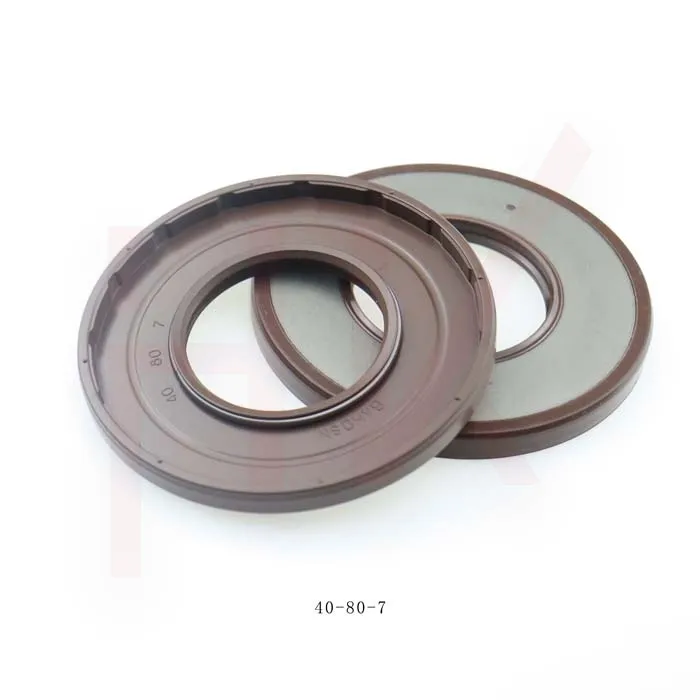Nov . 25, 2024 14:20 Back to list
Hydraulic Cylinder Seal Kit for Efficient Repairs and Maintenance Solutions
Understanding Hydraulic Cylinder Repair Seal Kits A Comprehensive Guide
Hydraulic systems are integral to various industries, ranging from construction to manufacturing, providing the necessary power to operate machinery and equipment. Among the critical components of these systems are hydraulic cylinders, which convert hydraulic energy into mechanical force. Over time, wear and tear can lead to leaks and diminished performance, necessitating the use of hydraulic cylinder repair seal kits. This article will explore what these kits consist of, their importance, and how to use them effectively.
What is a Hydraulic Cylinder Repair Seal Kit?
A hydraulic cylinder repair seal kit is a collection of components designed to replace worn or damaged seals in a hydraulic cylinder. These seals are vital for maintaining the integrity of the cylinder and ensuring proper operation. The kits typically include various seals, O-rings, and sometimes backup rings, which are crafted from durable materials like nitrile rubber, polyurethane, or fluoropolymer. Each material offers different attributes in terms of thermal stability, chemical resistance, and wear resistance, making it crucial to choose the right kit based on the specific application and operating conditions.
Importance of Seal Kits
The importance of hydraulic cylinder repair seal kits cannot be overstated. Leaks from a hydraulic cylinder can lead to a host of problems, including decreased efficiency, increased operational costs, and potential damage to other system components. By using a repair seal kit, operators can restore the performance of hydraulic cylinders, prolonging the life of the equipment and minimizing downtime. Additionally, timely repairs can prevent the escalation of issues, ultimately saving time and money in the long run.
How to Use a Hydraulic Cylinder Repair Seal Kit
1. Preparation Before starting the repair, ensure you have the necessary tools, including wrenches, seal pullers, cleaning materials, and safety gear. It’s important to work in a clean environment to avoid contamination during the repair process.
hydraulic cylinder repair seal kit

2. Disassembly Carefully disassemble the hydraulic cylinder, noting the order and orientation of all components. Take photos or make sketches if needed, so you have a clear reference for reassembly.
3. Inspection Once the cylinder is disassembled, inspect all components for wear or damage. This is a critical step, as it allows you to determine if any parts beyond the seals need replacement.
4. Cleaning Thoroughly clean all surfaces with an appropriate solvent to remove old seal material and any debris. Pay special attention to grooves where seals will sit, as residue can cause new seals to fail prematurely.
5. Installation Select the correct seals from the repair kit based on the dimensions of the original parts. Carefully install the new seals, ensuring they sit properly in their grooves. Avoid using tools that could damage the seals during installation.
6. Reassembly Reassemble the hydraulic cylinder using the reference notes or photos taken during disassembly. Ensure all components are tightened to the manufacturer’s specifications.
7. Testing Once reassembled, it’s essential to test the hydraulic cylinder under controlled conditions to ensure that it operates correctly and that there are no leaks.
Conclusion
Hydraulic cylinder repair seal kits are invaluable for maintaining the efficiency and longevity of hydraulic systems. By understanding the components, importance, and proper usage of these kits, operators can significantly reduce downtime and extend the life of their hydraulic equipment. Regular maintenance and timely repairs are critical for optimal performance, making these kits essential for anyone involved in the operation of hydraulic systems. With the right knowledge and tools, repairing hydraulic cylinders can be a straightforward process that pays dividends in productivity and cost savings.
-
Wiper Oil Seal: Our Commitment to Clean Hydraulics
NewsAug.13,2025
-
Hydraulic Oil Seal for Self Discharging Cars
NewsAug.13,2025
-
Hub Oil Seal for Agricultural Tractor Hubs
NewsAug.13,2025
-
Skeleton Oil Seal with NBR Material
NewsAug.13,2025
-
Rotary Lip Seal for High Pressure Applications
NewsAug.13,2025
-
Cylinder Seal Kits Our Legacy of Hydraulic Trust
NewsAug.13,2025
-
Unlocking the Potential of Hydraulic Systems with Essential Sealing Solutions
NewsAug.06,2025
Products categories
















